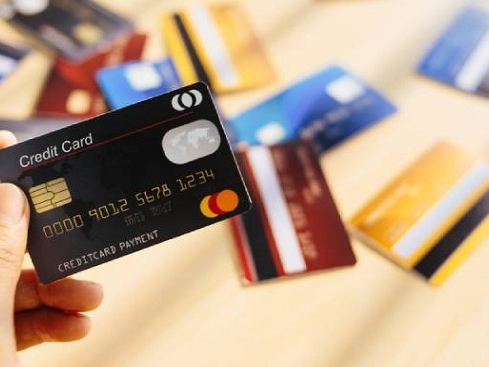According to Bankrate, the largest demographic of people who have a budget are Baby Boomers at 62%. That’s it! 62%!!! The numbers get even more staggering when you consider that 51% of Millennial’s don’t have a budget! I am sure a lot of these people want to have a budget and want to be able to stick to their budget. It’s just that they have given up. Financial experts and bloggers love to write down the steps to creating a budget and they are great resources. I, myself, have covered the process of creating a budget. It’s a worthy endeavor and is important to provide everyone with those important steps so they know where to start. However, it is easy to walk through the initial steps. What is far harder is actually following through. That’s why I wanted to provide some advice on how to stick to your budget.

Work on Understanding your Relationship with Money Stick to your Budget by Creating a Schedule Began Thinking of Interest as a Tax on your Money To stick to your Budget, Flip it on its Head Try to Stick to your Budget, but Give Yourself a Break Work on Understanding your Relationship with Money
Experts like to refer to money as if it is very logical in the line of A+B=C however most of the decisions we make with money are far from logical! It would be wonderful if everyone could just look at a newly released phone and say “That’s great but I already own a phone that works”. That’s just not realistic. If that were the case, half of the companies in the world would no longer exist. We convince ourselves that a new pair of shoes or buying that new game is going to make us happy.
There are many reasons that we spend more money than we should and I could probably fill a book with the reasons. For now, take some time to write down the reasons you spend money. Also, ask a partner or friend to provide some feedback on times when you spend money that you don’t need to. This will allow you to start questioning your intent before you make purchases. Also, if you haven’t already take an Enneagram test and then check out this article from the The Financial Diet which will give you more insight into your relationship with money.
Stick to your Budget by Creating a Schedule
One of the easiest things to do is schedule in time to review your budget. By having a set time scheduled you will ensure that you are staying on budget. We live hectic lives and if it’s not on the schedule it’s never going to happen. Sticking to a budget is much easier when you break it down into manageable chunks of time. I like to do a check in once a week. I like to choose a day and time that I know is typically going to be quiet so that life doesn’t intrude. For me, that is typically Sunday evening. Reviewing my budget before the week begins allows me to have an understanding of where I stand as I plan out my weekly expenses.
You should also schedule a time to review your previous months expenditures and set up your budget for the following month. Once you have been budgeting for a while this will take very little time, but at the beginning you may want to schedule an hour for this review. This is your time to make adjustments to your budget. Every month try to focus on a specific category that you can cut spending in. By focusing on a specific category it makes it easier to see where you waste money. It is empowering to see that you are saving money and will help you stick to your budget. It also helps you lower your expenses moving forward and will allow you to pay off your debt faster.
Begin Thinking of Interest as a Tax on your Money
Everyone knows what interest is, but we tend to not actively think about it when we are paying that car loan every month. Businesses cleverly discuss loans in the term of your monthly payment. They are required to tell you what your interest will be but once the bill comes it will be just one lump sum. This makes it easy to forget about the interest. By focusing on the monthly payment they break it down into an easily digestible payment. There is a reason that every time you go to a car dealership they try to verify what you want your monthly payment to be. They can sell you a much more expensive car by simply pushing out the loan term which also increases the interest you pay over the life of the loan.
Car loans are not the only place that this occurs. Let’s take a look at an example of three typical debts that a lot of households have. To keep it simple, I am going to look at someone who has $30,000 in debt which is well below the national average. $5,000 of the debt will be credit card at the current average interest rate of 19%, $5,000 will be student loans at the current average of 5.8% with 4 years remaining and 20,000 will be a car loan at the current average of 5.27% with three years remaining.

Let’s do the Math:
Credit card monthly interest comes up to $79.17Student loan interest comes up to $24.17Car loan total monthly interest comes up to $87.84That means that someone in this situation would be paying $191.18 a month on interest! That is paying somebody for the right to use their money and is essentially a tax on you. Now I am not saying that you should never have debt. Unfortunately, there will be situations where you may have to take on debt, but your focus should be on paying off that debt once you have met your initial savings goal. Keep this in mind the next time you decide to splurge on a purchase.
To Stick To Your Budget, Flip it on its Head
What do I mean when I say flip it on its head? I mean that you need to rethink your budgeting process. The goal of a budget is to be able to save money and cover all of our monthly expenses. Saving money should be our primary goal and covering monthly expenses should be our secondary. Yet, we are told that we need to worry about necessary expenses first and then whatever is leftover is our savings. That has been the budgeting adage for eons and it just doesn’t work. There will always be something that will come up or there is always that one thing that we have to have. You need to be prioritizing our savings goal first.
What if we don’t have enough money for savings?
Listen I get it, for some of you reading this post you may not be in a situation where you even have the ability to save. When we were first starting out we were in the same situation! There were a couple of months where saving 25 dollars felt huge! If you are in this situation, you need to take a hard look at what you can do to get to a better situation. Perhaps get an extra job and have that any money you earn there be your savings account. The point is that savings should be your focus. Maybe you have stuff you can sell to start your savings? These small things can have a large impact. Initially focus on getting to the $2,000 savings threshold as I have previously discussed.
Try to Stick to your Budget, but Give Yourself a Break
Listen you probably won’t stick to your budget every month and that’s okay. Don’t be discouraged if you fail at first. The first couple of months will be trial and error. When we first started budgeting I set extremely lofty goals that basically had us not living life. We obviously failed to stick to that budget and after some trial and errors have been able to find a budget that suits us well. You probably saved money just by having a budget because you likely held off on a purchase because you were budgeting.
